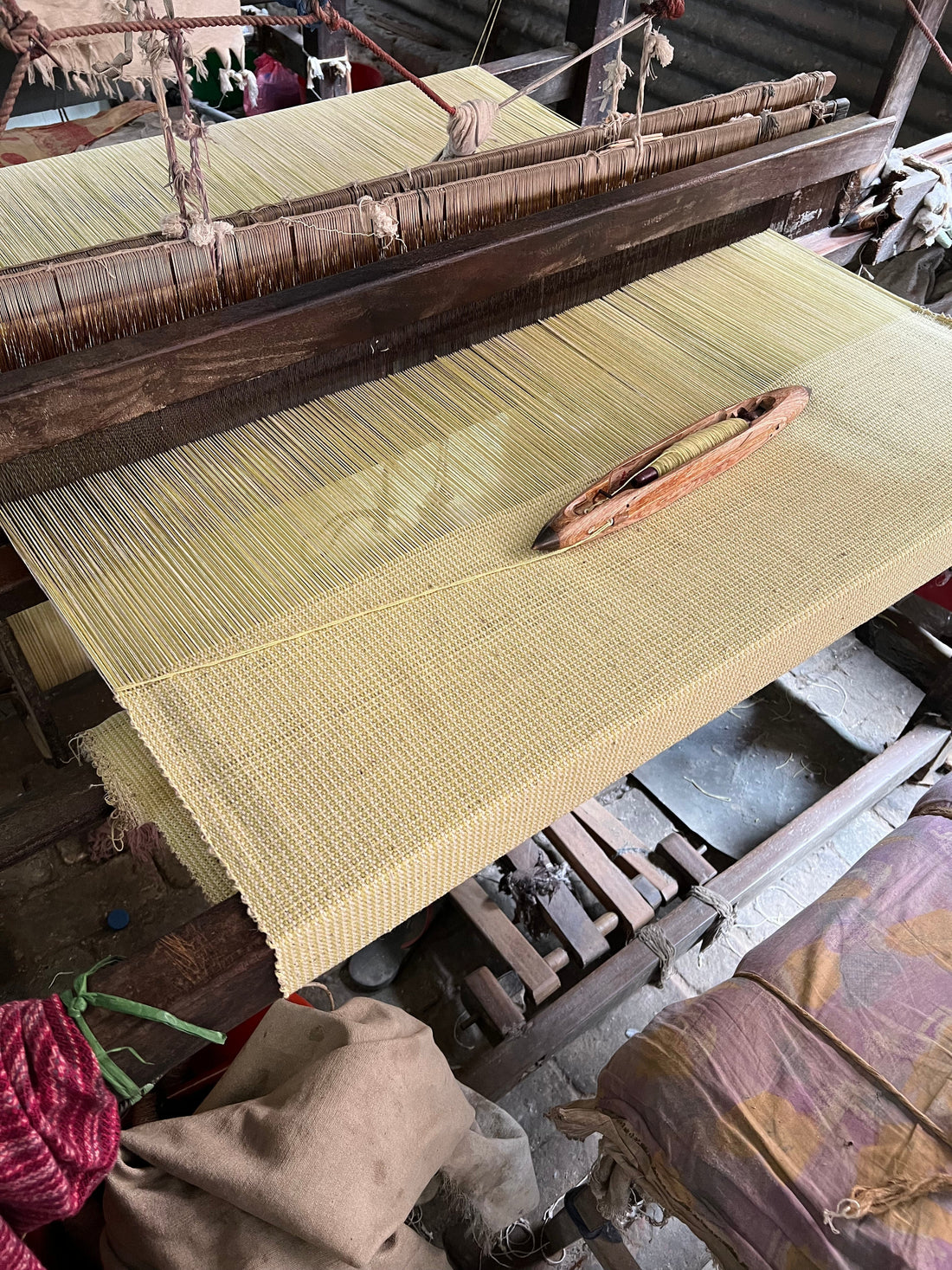
Natural Fiber vs. Synthetic Fiber Clothing
We get this questions often: why is it better to wear natural fiber clothing than synthetic fiber clothing? Oh boy, read on to get your geek on with me.

Natural Fiber vs. Synthetic Fiber
People are increasingly recognizing the superiority of natural fiber over synthetic fiber clothing. With all the options out there, many of us are prioritizing comfort, breathability, health, and sustainability. If you're trying to align your wardrobe with personal wellness and environmental responsibility, natural fiber clothing is a natural first step.
Fast fashion is known for producing cheap, disposable clothing. And that low price tag comes from horrible working conditions, poorly made clothes, and cheap synthetic fabric like nylon and polyester. I'll write about ethical working conditions in a future article- keep your eyes on this space for that. Today let's delve into why natural fiber clothing like cotton, linen, silk, and wool, are superior to synthetic options.

Comfort & Breathability
The biggest thing you're likely to notice when wearing natural fiber clothing is comfort. Natural fibers are inherently more breathable than synthetics, allowing air to circulate around your body freely. This breathability helps you regulate your body temperature- a necessity in the long hot days of summer. In hot climates natural fibers like cotton and linen help you stay cooler, and in cold climates wool and alpaca keep you warm while still allowing your skin to breathe. Our Dear Friend clothing line is made from hand loomed cotton fabric and hand knit with cotton yarn. This cotton is crazy breathable, soft, lightweight, and highly absorbent. Our partners in Nepal are looming a cotton fabric for us that looks very similar to linen, and has the same breathability, but it is softer and won't crease as linen does.
Synthetic fabrics have the very opposite properties, trapping heat and moisture close to your body. Making hot sweaty days hotter and sweatier, often causing odors and skin irritation.
Health & Skin Sensitivity
Skin is the largest organ in the human body and is our shield against dirt, chemicals, and other irritants.
Synthetic fibers can irritate the skin and cause allergic reactions to those with more sensitive skin, especially when treated with chemicals, as most synthetic fabrics are. Those chemicals can even be inhaled or absorbed through the skin, creating additional concerns for long-term health impact.
Most natural fibers are naturally hypoallergenic and not treated with the chemicals synthetic fabrics are. Because they are more breathable, as discussed above, your skin has space for its natural processes and is much less likely to become irritated. Many parents choose natural fiber clothing for babies because of this gentleness.

Sustainability
Fast fashion is heavily reliant on synthetic fibers because of their low cost. We know that it is one of the most polluting industries in the world, promoting overproduction and overconsumption, resulting in massive amounts of clothing waste overflowing landfills.
We go one step further with our Dear Friend clothing line, and primarily work with handloomed fabrics. Using these fabrics not only creates jobs for weavers, sustains traditional techniques and crafts, promotes fair labor practices, and allows us to share these incredibly special fabrics with you, but it is also a people powered skill, using no electricity.
Additionally, we are working to create a closed-loop system, where waste is minimized, and materials are reused whenever possible. Natural fiber clothing takes better to natural and low-impact dyes, which are the only dyes we use for Dear Friend.
Even if you do throw away natural fiber clothing, it has a different impact in our waste system to synthetic fabrics. Natural fibers and low impact dyes will break down much faster and safer than synthetic fibers, sometimes even enriching the soil as a compost. Synthetic fabrics can take hundreds of years to decompose, and pollute the earth and water with chemicals and microplastics.

Timeless Aesthetic
Natural fibers age more beautifully than synthetic fibers. Synthetic fabrics often pill and lose shape the more you wear them. Some get brittle, and even start to feel like plastic over time. They fall apart so fast you must buy frequent replacements. Alternatively, if care for your natural fiber clothing, like cotton, linen, and wool, they will improve with age, developing a unique softness and mellow color.
Natural fibers have clothed humans for thousands of years. When you wear a natural fiber dress you can be proud of supporting the traditional practices, artisans, and communities that have practiced and worn these garments for generations.

Natural Fiber Clothing is a Conscious Wardrobe Choice
As we pay more attention to the environmental, ethical, and personal health impacts of our purchases, choosing clothing made from natural fibers brings us closer to a more responsible and healthy lifestyle. Natural fibers offer numerous advantages over synthetic fibers, from their lower environmental footprint and superior comfort, to their aesthetic appeal and biodegradability.
No material is without impact! And synthetic fibers can be super useful in performance wear, weather-resistant outerwear, or specialized garments. But their impact on the environment and health has become impossible to ignore. By choosing sustainably produced natural fiber clothing and brands that prioritize ethical practices, like Dear Friend, you make a meaningful difference for yourself and the planet. Making the shift to natural fiber clothing is one of the easiest ways we can reduce our environmental footprint, and align our wardrobes with our values.

